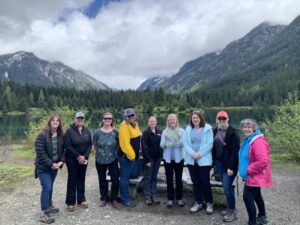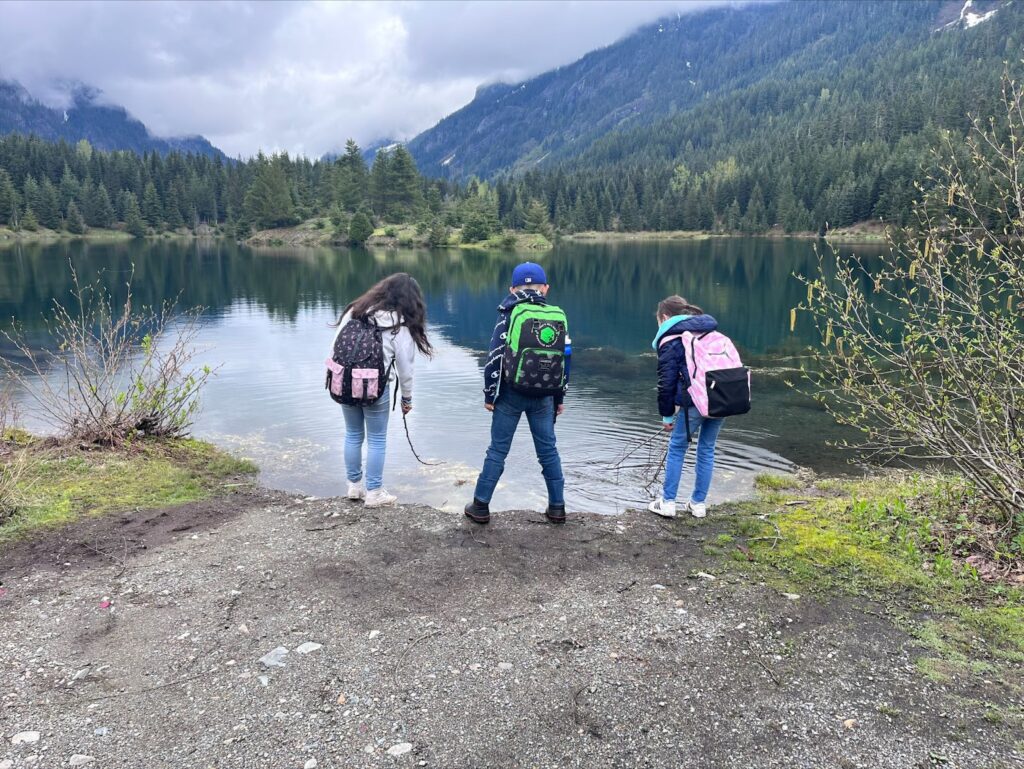Visitors to Ann Riley’s third-grade classroom at Lincoln Elementary School in Ellensburg this spring would have discovered a group of eight and nine-year-old students enthralled by an unusual engineering challenge: designing structures to help pill bugs — aka ‘roly-polies’ — pass safely from one side of Interstate 90 to the other.
“They were so engaged, and they took it very seriously,” says Principal Joanne Duncan. “In their final presentations, they got to talk about their designs and what worked as well as what didn’t. They were so proud of what they had accomplished.”
The assignment was not theoretical, but part of a pilot program for Lincoln Elementary teachers to integrate lessons on the I-90 Wildlife Crossing project

with STEM and English Language Arts. The Wildlife Crossing bridges a fifteen-mile section of interstate and connects the North and South Cascade mountain ranges, creating safe passage for a wide variety of species from elk and black bears to salamanders and yes, roly-polies. Since the first seven-mile stretch was completed in 2019, over 4,000 animals have used the crossing.
As part of their planning process, Lincoln Elementary staff attended a Pacific Education Institute (PEI) workshop that used Project WILD activities as an introduction to ways the Wildlife Corridor project could be adapted for use in K-5 classrooms. PEI’s Central Washington FieldSTEM Coordinator Megan Rivard helped participating educators connect with key personnel involved in the overpass project.
“Megan was instrumental in making this integration happen,” says Riley. “The training that she offered and her work with the school district’s PEI leadership team provided an opportunity for teachers to talk, share ideas and plan. She helped to contact agencies involved in the project, which led to the discovery of the Gold Creek Pond area.”
Located within the Wildlife Crossing Corridor, Gold Creek Pond is the site of a significant ecological restoration project to improve fish and other animal habitats, improve water quality and keep the ADA accessibility and beauty of the recreation site, which includes a picnic area. It features two ‘underpass’ areas beneath the freeway and reflects the ambitious and unique nature of the overall project both nationally and internationally. Typically, wildlife crossings focus on larger species, but the I-90 venture aims to make two-way traffic possible for all creatures.

For part two of the PEI workshop, Rivard met participating teachers at the pond where they were able to learn about the massive restoration project firsthand from U.S. Forest Service wildlife biologist Patricia Garvey-Darda and Washington State Department of Transportation (WSDOT) Assistant Region Administrator for Development, Brian White. They also learned about other partners such as the Sierra Club, The Nature Conservancy, Mountains to Sound Greenway Trust, American Rivers, The Summit at Snoqualmie and more.
Principal Duncan attended the workshop and came away impressed. “Listening to Patty Darda speak about what it took to have this project be successful, it was listening to and being respectful of different perspectives,” she says. “These partners were able to come together around a common vision. If we can’t start that in our elementary schools and get kids working to solve the complex problems we are facing as a society, I don’t know what the point of schooling would be. It’s critical for our future.”
Once the training was complete, it was time to implement the pilot with students. Riley’s class read about the wildlife crossing project and used camera trap photos and videos to collect and analyze data about the types and numbers of animals in the project area. In preparation for a field trip to Gold Creek Pond, they took walks on the Palouse to Cascade trail to practice looking for signs of animals. Then they, too, visited the pond.
Their response was positive, according to Riley. “Students were so enthusiastic,” she says. “Many had heard about the bridge, but none knew of the extensive underpasses that are also part of the wildlife corridor. They felt proud to have an internationally recognized project in their own county.”
Riley and Duncan will continue to focus on outdoor education and strengthening their integration of PEI’s framework K-5 at the new Ida Nason Aronica Elementary School next year. Riley plans to implement the Wildlife Crossing project again, hopefully with additional resources. “We have to keep doing this,” she says. “Having interviews with scientists and engineers who have worked on this project would add another dimension to curriculum integration. We would like to create a field guide for identifying plants, animals, and signs of animals.”
Duncan agrees. “I encourage everyone to jump in and try it,” she says. “Here is a shining example of something we need to do because we can see the benefit for kids. We’ll learn something new each year and keep getting better.”
